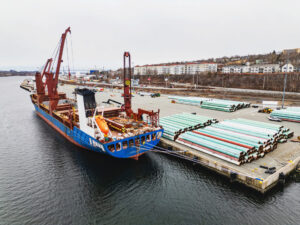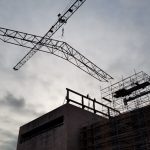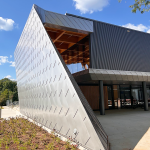
At the halfway point of 2024, U.S. construction spending was down roughly $1.7 billion from the previous year. While new construction projects are expected to grow by 8.5 percent in 2025, several uncertainties for the upcoming year could create challenges for businesses in the construction industry.
Calum Mair, commercial director of North America for EPD, an aftermarket parts and components seller for construction, agricultural, and industrial machinery, has forecasted five key challenges the construction industry could face in the coming year and provided insights on how to avoid them.
Tariffs could lead to an increase in construction input prices
During President-elect Donald Trump’s 2024 campaign, he asserted he intends to impose a tariff of 60 percent on goods from China and a tariff of up to 20 percent on goods from other countries. If these tariffs are imposed, prices for imported materials and resources will increase through suppliers to the customer.
Mair says, “Proposed tariffs on imported materials could significantly raise construction input costs, impacting project budgets. To mitigate this, firms should prioritize sourcing materials domestically or from countries with lower tariff rates. Additionally, adopting alternative materials and optimizing resource usage can help offset cost increases. By planning ahead and diversifying supply chains, contractors can reduce the financial burden on projects and clients.”
Supply chain bottlenecks could lead to longer wait times and higher prices on imported materials
With more stringent tariffs expected to be placed on China—a leading source of U.S. construction materials—importers will most likely look to alternative sources for these supplies. Paired with existing disputes in current trade routes, such as the Red Sea, importers of construction supplies are likely to see disruptions to supply chain stability. Such disruptions can lead to longer transit times and higher costs for imported materials, affecting the costs of construction projects in the United States.
“Supply chain bottlenecks and tariffs on Chinese imports demand a strategic response from the construction industry. Diversifying suppliers, both internationally and domestically, can reduce dependency on vulnerable trade routes,” Mair explains. “Companies should also consider stockpiling critical materials, leveraging technology for logistics, and focusing on no or low-tariff jurisdictions. By adopting these measures, the industry can mitigate disruptions, control costs, and maintain project timelines despite global challenges.”
Stricter immigration policies could impact the workforce
Around 30 percent of workers in the U.S. construction industry are immigrants, while in states like Texas and California, the number reaches 40 percent. With stricter immigration policies expected in the coming year, there could be a severe reduction in the number of available workers.
“Stricter immigration policies could exacerbate workforce shortages in the construction industry, especially in states heavily reliant on immigrant labor. To address this, firms should invest in workforce development programs, including training initiatives to attract and upskill domestic workers,” Mair says. “Expanding the use of automation and construction technology can also help offset labor gaps. Advocating for balanced immigration reforms that address workforce needs while ensuring compliance is essential for maintaining project momentum and growth.”
Global ESG regulations could lead to higher prices for U.S. contractors
The United States is expected to ease environmental, social, and governance (ESG) regulations in the coming year, which, along with deregulation in the energy sector, means lower costs for builders and others in the construction industry. However, many countries where the U.S. sources construction supplies—such as those in the European Union—still must abide by stricter ESG regulations, which could lead to increased costs for building supplies from overseas.
“Stricter ESG regulations in supplier countries could drive up material costs for U.S. contractors. To mitigate this, construction firms should explore sourcing from regions with less stringent ESG mandates or prioritize domestic suppliers, Mair states. “Additionally, investing in sustainable practices and materials now can reduce long-term reliance on high-cost imports and align with future regulatory trends. Proactively adapting supply chains ensures cost control while maintaining compliance and sustainability goals.”
Interest rates to remain uncertain for the near future
Although the Federal Reserve has forecasted a drop in interest rates over the next year, from around 4.5 percent at the end of 2025 to around 3.4 percent at the end of 2026, near-term rates are less certain. Interest rate volatility could affect businesses looking to start new projects in 2025 as higher rates make borrowing more expensive.
“Uncertainty around interest rates poses challenges for businesses planning new construction projects, as fluctuating borrowing costs could impact financing. To navigate this, firms should prioritize cash flow management and explore alternative funding options to reduce dependency on loans,” Mair says. “Locking in rates when favorable and staggering project timelines can also mitigate financial risks. Proactive planning ensures resilience against interest rate volatility while supporting project feasibility.”





